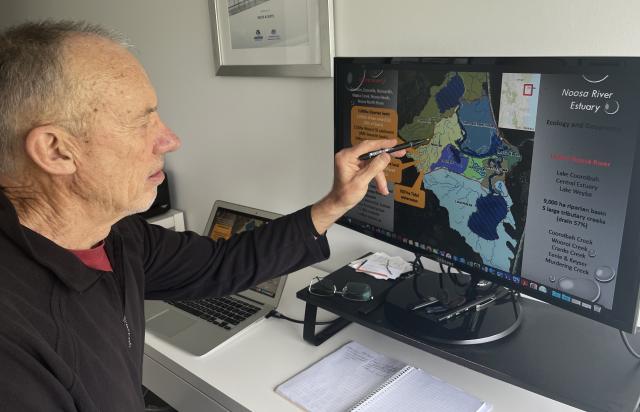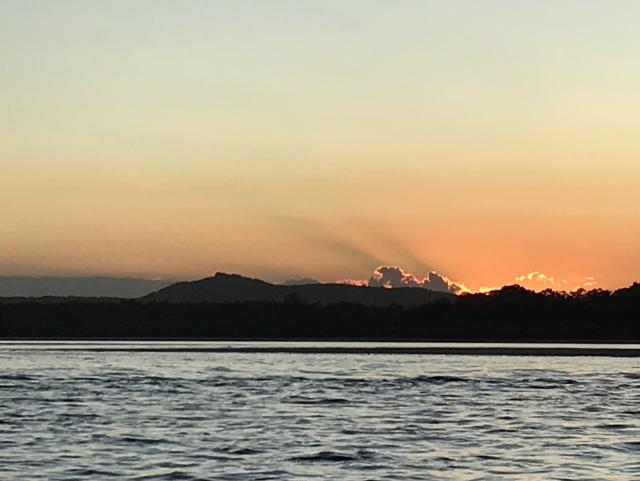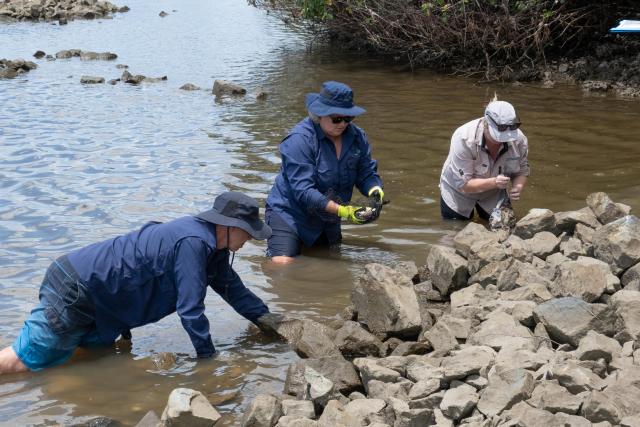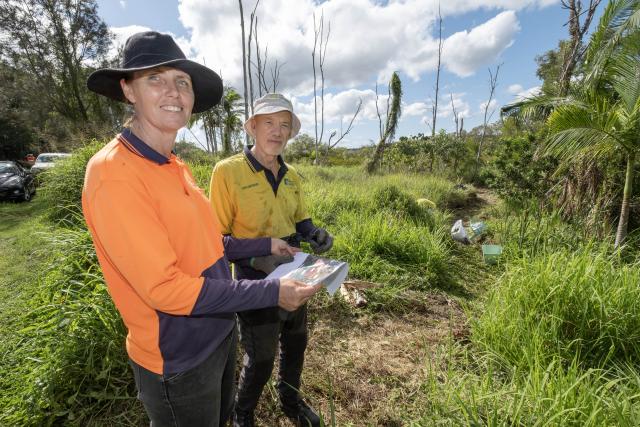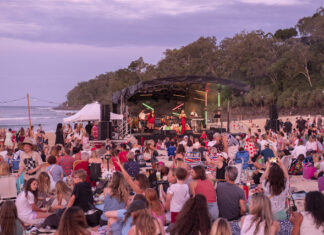River conservation and restoration activities led by community groups are still going ahead, even though Noosa Council and its joint River Advisory Committee with State Government have not yet agreed on any integrated river management plan.
Last month council deferred the draft Noosa River Catchment Management Plan (NRCMP) until July 2024, despite the plan having undergone years of planning and consultation and been recommended by staff for approval.
Local ecologist Peter Hunnam said conservation efforts had resulted in the continuing growth of shellfish reef re-construction and oyster gardening in the River’s lower estuary, literally, with diverse invertebrate and fish life colonising new riverbed habitat.
In the rural upper catchment, riparian restoration work by Noosa and District Land Care and landowners continues to keep valuable topsoil where it belongs, in Kin Kin, not washing down the creek to smother benthic habitats in the lower River system, he said.
And a new community initiative is cleaning up some of the most degraded sections of Wetlands along the urban foreshore, as an essential step in restoring a healthy functioning estuary ecosystem.
Peter who is coordinating the initiative explains how these efforts complement one another.
“This is integrated catchment management in action in Noosa River Biosphere: recreating oyster reefs, restoring riparian vegetation along rural creeks and regenerating urban wetlands all increase diverse habitat structure,“ he said.
“This provides the vital framework on which the whole river ecosystem and rich living community of plants and animals depend. The long-term results from these initiatives are greatly increased biological diversity, ecological health and water quality, as well as sustaining the amenity of the river and catchment for all users.”
The Foreshore Clean up activity this summer follows last year’s survey by local conservation group Noosa Integrated Catchment Association (NICA) which found extensive damage to the estuary foreshore and riparian wetlands, caused by adjacent urban land-use.
A summary of the survey concluded that more than 60 per cent of the estuary foreshore is not adequately protected from urban development and waterway use. Roads, buildings, parkland and other hard surfaces and structures have been built too close to the water. Eight hundred jetties, ramps and pontoons have been built along the foreshore. More than 200 stormwater outfalls discharge urban run-off and contaminants directly onto the shore.
Peter was one of the survey’s authors.
“This is Noosa River suffering from a thousand cuts,“ he said.
“The combined impacts from urban development closely around the margins of the Estuary cause serious damage to ecosystem health, resilience and biodiversity. We are witnessing the progressive loss of Noosa River’s vitality and resilience.
“Last year we found over half of the estuary foreshore is being degraded – slowly killed – by multiple pressures from urban land-use and waterway use. This year we want to clean up and start to repair a few of the most degraded sites – to enable them to become healthy functioning wetlands again.”
Noosa Council has approved a plan for NICA to work at three target sites close to the centre of Tewantin – on the foreshore adjacent to Lake Doonella, Lakeside Park and Tewantin Park.
The small sections of foreshore have become seriously overgrown with weeds and rubbish debris accumulated over many years, in particular around stormwater outfalls. The masses of invasive weeds have smothered the natural wetland habitat, destroyed natural restoration processes and prevented routine site access and maintenance.
From now until March local conservation volunteers from NICA and other groups will work with specialists from Bush Renewalls and support from Council to systematically clean up weeds and rubbish damage at the degraded sites, followed by initial ground preparation and planting.
“The aim is to repair the sites sufficiently to enable further ecological restoration to occur naturally, boosted by some initial strategic planting of ground cover and pioneering plant species native to the area,“ Peter said.
“If we’re successful the repaired sites will become progressively more resilient to pressures from adjacent land-uses such as run-off and contaminants from roads and storm drains. The sites will be able to be accessed and maintained by routine river and bushcare programs managed jointly by local community groups and council staff.
“Not least the foreshore around Tewantin and Lake Doonella will be made more attractive naturally for the local community and visitors to enjoy the wetlands on their doorsteps and the rich wildlife communities they support.”
NICA is inviting members of the public to come along on scheduled Get Wetland Days in December to March, to observe and learn about Wetlands and help with the clean up and restoration work when conditions are suitable.
If you’re interested, would like to get involved and learn more about Noosa wetlands and conservation activities contact NICA Office for dates and details: admin@noosariver.com.au or 5449 9650.

